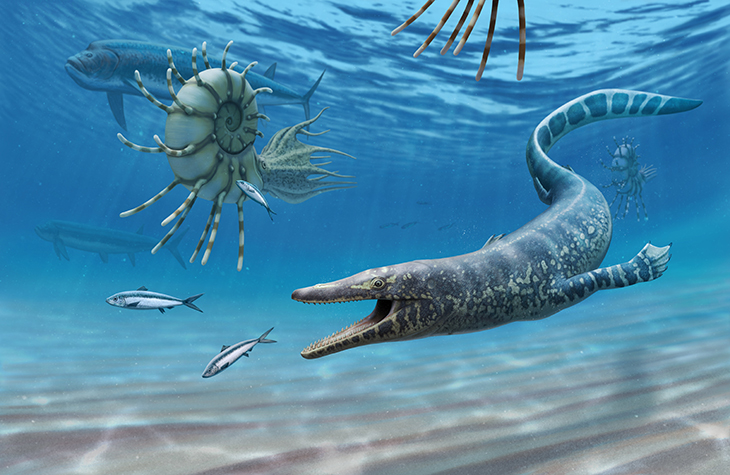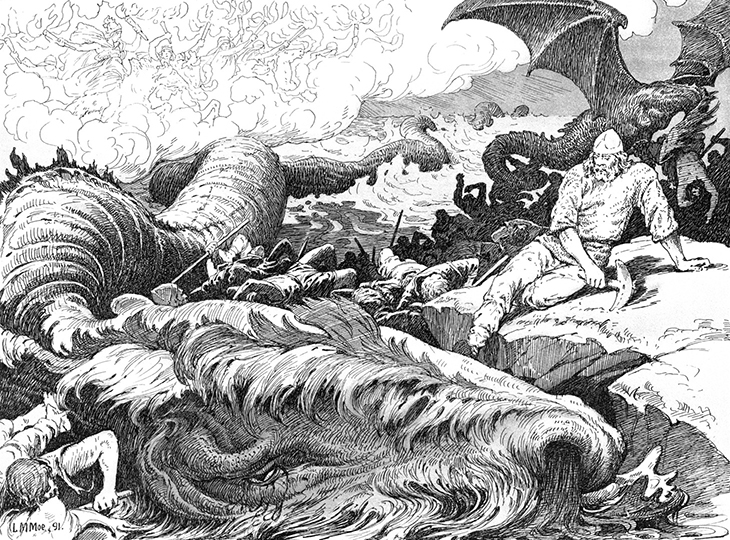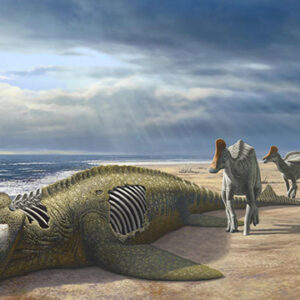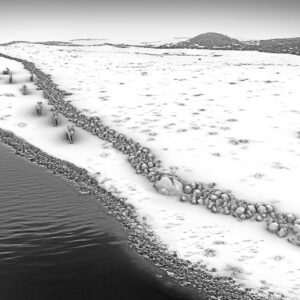
In the curriculum of a Norse Mythology 101 course, an indispensable segment would undoubtedly delve into the Midgard Serpent, recognized as Jormungandr. This mythical creature, according to lore, encircles the Earth, supporting the oceans by ingeniously looping its tail into its mouth.
In a fascinating convergence of ancient myth and paleontological discovery, a novel species of Mosasaur, an awe-inspiring marine reptile from the distant past, has earned its place in the fossil record as Jormungandr walhallaensis, paying homage to the legendary serpent.
This recently identified species exhibits characteristics akin to two extensively studied Mosasaurid genera. One of them, Clidastes, thrived during the early Cretaceous period, attaining lengths between 6 and 14 feet. In contrast, the second genus, Mosasaurus, dwarfed its predecessor by approximately 40 feet and inhabited the late Cretaceous period.
For aficionados of Norse mythology, the species designation “walhallaensis” might evoke echoes of Valhalla, Odin’s renowned hall where fallen warriors find their abode. Intriguingly, the nomenclature is grounded not in mythic homage but rather in the practicality of its discovery location—Valhallaensis is derived from the town in North Dakota where the fossil was unearthed.
The fossil itself stands as a remarkable specimen, comprising a nearly complete skull, jaws, and spine, offering a tangible connection between the mythical realms of Norse sagas and the prehistoric seas of our planet.

“If you put flippers on a Komodo dragon and made it really big, that’s basically what it would have looked like,” Amelia Zietlow, the study’s lead author, said. She is a Ph.D. student in comparative biology at the American Museum of Natural History.
Fossilized remains of Jormungandr walhallaensis, indicative of its prominent role in the food chain and oceanic habitat, have been discovered across all seven continents. The species, believed to have existed approximately 80 million years ago, boasted a length of about 24 feet. A distinctive characteristic of this creature is the presence of bony ridges above its eye sockets, imparting a perpetually stern expression to its visage. This unique feature contributes to our understanding of the evolutionary adaptations that allowed Jormungandr walhallaensis to thrive in its ancient marine environment.
“As these animals evolved into these giant sea monsters, they were constantly making changes,” Zietlow said. “This work gets us one step closer to understanding how all these different forms are related to one another.”
Numerous questions about these changes still lack answers, including inquiries about the timing and frequency of flipper evolution, the transition of their early ancestors from semi-aquatic to fully aquatic lifestyles, and their closer relationship to snakes or monitor lizards.
What are your thoughts? Please comment below and share this news!
True Activist / Report a typo


